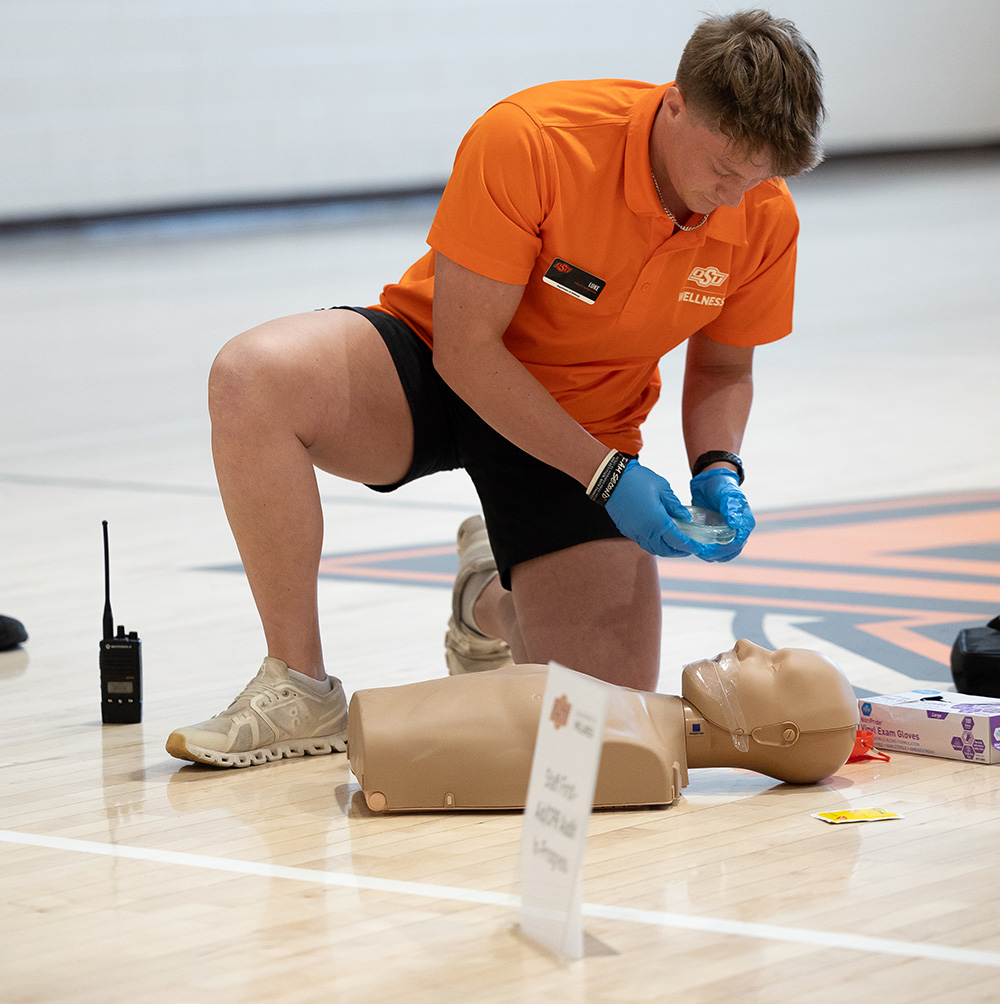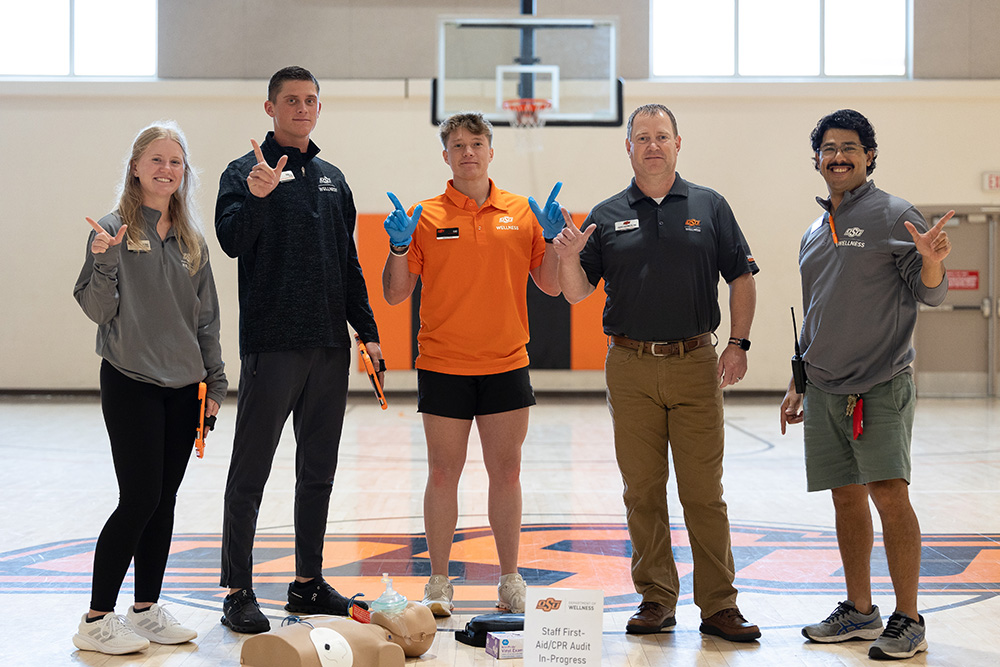On January 2, 2023, millions watched stunned as 24-year-old Demar Hamlin of the NFL’s Buffalo Bills collapsed during play and suffered a cardiac arrest. Bills’ trainer, Denny Kellington, an Oklahoma State University (OSU) graduate, immediately went to Hamlin. He performed CPR before a defibrillator was used and his heartbeat was restored.
The immediate response of Kellington and other medical personnel was vital to “not just saving his life, but his neurological function” according to Hamlin’s doctors at the University of Cincinnati hospital. In cardiac arrest, the heart is no longer pumping blood, which means no oxygen is traveling to the brain or other organs. Seconds are vital. The longer a person goes without oxygen, the chances of organ damage increase, and the chances of survival decrease. CPR mimics a pumping heart, which keeps blood flowing, and a defibrillator shocks the heart, which can cause it to start beating again.
His quick action likely saved Hamlin’s life that day as the world watched. He was rewarded by the NFL with an official fifth-place vote for NFL MVP. The value of his safety training is evident.
Kellington, the commencement speaker at OSU’s May graduation, said “I was not a hero on January 2 — I was ready.”
The Value of Safety Training in Student Staff
Luke Davis, a student facility supervisor at OSU’s Department of Wellness, also found himself being called into action recently while working out at another facility over summer break.
As he was about to the leave the facility, he heard a young woman scream for help asking for a doctor. A young man in his early 20s had collapsed to the floor unconscious. People gathered. However, no one stepped in to help until Davis arrived on the scene. Luke explained that he was CPR certified and immediately began the process of CPR by himself.
Davis went through step-by-step what he had learned in his training from surveying the scene to checking for responsiveness to directing a person to get the facility’s AED.
EXTRA CREDIT: Three ways to improve your safety training.
At OSU, facility operations students like Davis undergo CPR/AED and First Aid training. Throughout the year, their skills are tested through random CPR audits throughout the facility.
“We have always required our student workers to be CPR certified,” said Jason Linsenmeyer, the assistant director of Operations at OSU. “However, this year was the first time our department implemented CPR audits to review their skills sets in responding to emergencies. We set up mock situations for the worker during their shifts and radioed them at random to report to a specific location and go through step-by-step CPR procedures using a mannequin, practice AED and explaining/articulating our department’s emergency action plan.”
OSU plans to continue implementing CPR audits annually in addition to including comprehensive emergency action plan audits to enhance staff readiness for emergency situations. Because of this preparation, Davis was ready.
With a crowd of roughly 250 people watching, Davis began compressions and rescue breathes. “I remember his ribs breaking, but I continued because that’s how I knew I was doing it right,” he said.
Davis continued with CPR for roughly five minutes before a staff member was able to bring the facility’s AED. Ten minutes later, EMS arrived and relieved Davis and took the man to the hospital where he survived the incident. The emergency personnel stated that much like with Demar Hamlin and Denny Kellington, this man would not have survived without Davis’ intervention.
OSU Safety Training Proved Powerful
Davis credited the OSU Department of Wellness CPR audits as a significant factor in the positive outcome of the incident. “I felt confident in my abilities to perform CPR,” he explained. “I did not think about a single thing except I knew I needed to save the man’s life so that is what happened. It was automatic and second nature.”
In fact, Davis learned the lesson many of our campus recreation professionals try to teach student staff members:
- An emergency can happen anytime and anywhere.
- Being CPR/AED/First Aid certified can make the difference in saving a life.
Davis knows not everyone feels it’s their personal responsibility to get CPR/AED/First Aid certified. However, he feels it’s important for everyone who is a bystander to know how to help when emergency events happen. He expressed the appreciation that if he was not around and an emergency happened to a loved one, he would want someone certified to step in and help them.
Campus recreation professionals put emphasis on training and improving our student employees, especially when it comes to risk or crises management. Emergency circumstances are unpredictable, and campus recreation departments and their staff must be adaptable and ready to respond. It’s not enough just to certify them. It’s essential to follow up testing and refreshing their skills with safety audits or additional training during the school year.
Davis knows first-hand the value of safety training in campus recreation facilities. “The safety audits are the best thing we have done, and there is nothing we could have done better,” he said.
Like Denning Kellington, Davis was ready.
By Matt Beck and Alejandro Herrera. Beck is an associate director for the Department of Wellness. Herrera serves as the coordinator for Facility Operations and Student Development.












